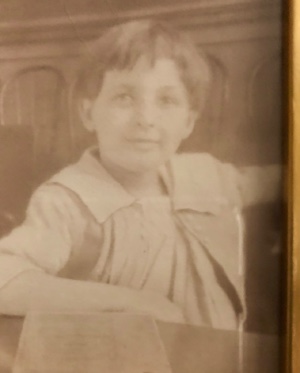The Past
It’s 1913. The word “teen-ager” was not yet in use. The constitutional amendment granting American women the right to vote had not yet passed. Canned beer, modern supermarkets, and Barbie dolls had not yet been invented. The US did not have an official national anthem.
And many practicing doctors in those forty-eight states had been educated haphazardly since, according to the National Library of Medicine, “Medical schools had become mostly diploma mills.”
It was also the year Fanny Landman was born in Cincinnati, Ohio. Maybe in a hospital. Maybe not. Her parents named her Fanny, after her father’s mother, who he had left behind in Austria when he set sail for America.
The family settled in the basin of Cincinnati, surrounded by other immigrant Jews, Germans and Italians scrambling to make a living. Their modest quarters had no running water, electricity or indoor plumbing. But Harry had found a job which would provide for his wife and children at Cincinnati Milling Machine Company. Harry had enough money to get by, but little protection against disease.
Little Fanny, at age seven, was stricken with both Diphtheria and Scarlett Fever – two common and serious childhood illnesses in the early 20th Century. She was buried in an unmarked grave. When her siblings reached adulthood, they tried to track down her burial plot; they failed in their efforts. This is the only photo we have of Fanny:

The Present
One evening, I went to see my ninety-two-year-old mother-in-law at her apartment in an assisted living facility. We talked of many things – and I learned more about Fanny than I had learned in the forty years I had been married to her son. When I got up to leave, my mother-in-law called out, “Wait one moment, Iris. I have something I want to give you. It’s not worth much, but I want you to have it.”
I watched her rummage through the tiny compartments of her jewelry box and finally she emitted a sigh of relief and pulled out a small velvet box. She turned to me and said, “I’m giving you this – the only thing left from my sister Fanny – who I never knew. I think you, of anyone else in the family, would appreciate it.”
Tears sprang to my eyes and stared to fall on my cheeks. “Don’t cry,” she whispered. “This is a good thing.”
I was touched beyond words and hugged her hard. And slipped the little girl’s ring on my pinky finger, where it has been ever since.
My mother-in-law was wrong. A family heirloom is priceless.
The Future
The ring will be a reminder of past tough times, the harshness of disease and poverty, and the fragility of life.
It will be a symbol of continuity – that even someone who we never knew could have such a profound effect on us
It will be a gentle reminder to be deeply grateful for the many advances, discoveries and inventions that have today given us a reasonable chance of good health and longevity
And it will be a prompt to recognize once again how important it is to delve into our family history. Ask for the stories. Listen to the reminisces. Record the observations and memories.
Why? Simply because it helps us live our own lives more fully.
What family heirloom do you prize? And why? How did knowing your roots and your ancestor’s stories enrich your life?
Keep Preserving Your Bloom,
Iris

A powerful story!
Lovely memory, and such wisdom about the importance of family stories and artifacts. My father is the family’s historian, actually across two continents, and carefully recorded tidbits and remembrances as well as dates and names. Having photos of ancestors back several generations is what keeps me connected to them and makes them real.